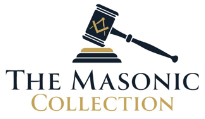
If there is one piece of Freemasonry jewellery that's equal parts fascinating and confusing to a lot of people, it is the Masonic Ring. Even those who are members of the brotherhood have different opinions about it. The topic is often that the ring means a variety of things to different people. Some connect it as a representation of their own Masonic journey as well as their dedication to the fraternity and their craft, while others see it as a chance to share the virtues of Freemasonry with the world and enlighten others about the organization.
Although numerous regalia and emblems are presented to a man when he becomes a member of a Lodge, and even more so when a brother turns into a Master Mason (MM), a ring isn't typically one of them. In fact, as a rule, no Masonic ring is presented to a Lodge member at all. There are only two recognized rings given to a Mason candidate. These are the rings presented soon after obtaining the 14th and 33rd degrees of the Scottish Rite. However, it is allowed for a candidate to buy a Masonic ring for himself or accept one as a gift from his loved ones.
Many of the rings that are worn by Masons are those with the square and compass symbol, commonly known as the Blue Lodge ring. Another common type of Freemasonry ring has the double-headed eagle emblem or the 32nd degree Scottish Rite ring. Some brothers may get themselves a new ring following their year as Worshipful Master or when they join an appendant body.
It is also often suggested, although not necessarily observed, that a Mason not wear a ring, or any other Masonic markings for that matter, until he has obtained his MM degree. But, when a brother completes and acquires his Master Mason degree, like many of his brethren, he may purchase a Masonic signet ring to signify his ongoing obligation and commitment of loyalty to his fraternity.
